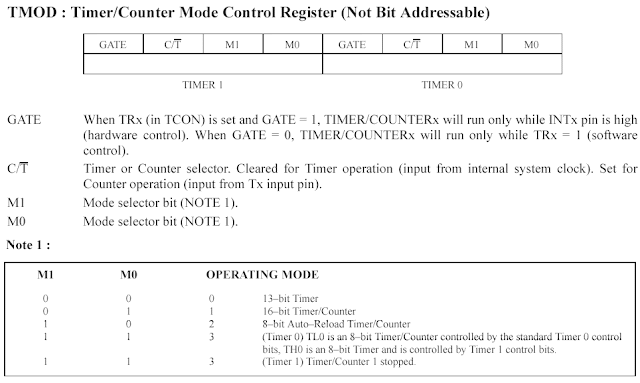DIGITAL CLOCK
·
A
bridge rectifier is used to convert A.C to D.C
·
7805
IC voltage regulator is used for a constant voltage.
·
A
least four 7490 counters, two 7447 binary to 7-segment converters are used for
construction.
·
330Ω resisters 20, some normal LED’s, two
common-anode 7-segment LED displays are wanted
to design a Digital Clock.
Construction:-
·
A
decade counter (7490) is used to count
from 0 to 9 in a natural mode as a cyclic.
·
We
get the 4-bit binary number in QA ,QB,QC and QD
pins as output.
·
Up
mode counting process is going on it, after getting the maximum count (number)
then returns to zero.
·
We
“set it Up” by writing the R01,R02 ,R91 and R92
lines.
·
If
both R01 and R02 are connected to 5V or logic1 and either R91
, R92 are connected to ground (logic 0)
·
Then
counter will reset. i.e QA ,QB,QC and QD become zero.
·
If
both R91 and R92 are connected to 5V (logic1), then the count
on QA ,QB,QC and
QD goes to 1001.
Working :
To create a divide by 10- counter:
·
First
connect pin 5 to 5V and pin-10 to
ground.
·
Then
connect pin12 to pin-1 & pins 2,3,6,7 are connected to ground.
·
Then
run the input clock signal from the time base or a previous counter on pin 14.
·
The
output appears on QA ,QB,QC and QD .
·
The output of pin11 is connected to the next
stage.
To create a divide by 6- counter:
·
First
connect pin-5 to 5V and pin-10 to ground.
·
Then connect pin-12 to pin-1 & pin-2 to
pin9 & pin-3 to pin-8.
·
Pin-
6 and pin-7 are connected to ground.
·
Run
the input clock signal from the time base or a previous counter on pin-14.
·
The output appears on QA ,QB and QC.
·
The output of Pin-8 is connected to next
stage.
Creating the second Hand:
·
In
this diagram the top two 7490’s divide the 60 Hz signal from the power supply down by a factor of 60.
·
The
3rd 7490 takes 1 Hz signal as
input and divide by 10.
·
Its
4 output’s drive normal LED’s in this
diagram.
·
The
4TH 7490 divides the output
of the third by 6 and its three outputs drive normal LED’s as well.
Displaying the time as
Numerals:
·
To
display the time as numerals we use the
7447 to connect 7490.
·
To
power on the 7447 pin-16 is connect to 5V and pin-8 to ground.
·
Connect
QA ,QB,QC and QD from 7490 to pin-7,1,2, &6 of 7447.
·
Connect
330Ω resistors to pins 13,12,11,10,9,15,14 of the 7447.
·
Connect
resistors through a, b, c, d, e, f & g segments to the 7- segmentLED.
·
Connect the common anode of the 7-Segment LED
to 5V.
To create the minute
hand section:
·
We
need duplicate “Second hand” portion to create the “Minute hand” section
·
To
create the “Hour Hand” portion we want to use an AND gate or inputs of the
7490.
·
After
recognizing the binary number 24 ,the hour counter reset to zero.
For a setting
mechanism:-
·
For setting the clock ( digital clock system )
just move the input wires to drive higher- frequency signals into the
“minute-hand” section of the clock.
·
In
a real clock we use push buttons (or) switches and gates to do the same
operation (working).
·
In
clocks (or) watches for the alarm & other features we (connected) including
low-power chips.
The chip
is probably embedded directly into the circuit board




Comments
Post a Comment